The Carrington Event – Biggest Solar Storm In Earth’s History
A.Sutherland – MessageToEagle.com – On August 28, 1859, an enormous solar coronal mass ejection hit Earth’s magnetosphere and induced one of the largest geomagnetic storms on record. A series of sunspots began to form on the surface of the Sun.
It was the greatest and most famous space weather event in the last two hundred years.

For the first time, observations showed that the sun and aurora were connected. The auroras generated strong ionospheric currents. A significant portion of the world’s 200,000 km of telegraph lines was harmfully affected, many of which were unusable for more than eight hours, and it had a strong and negative economic impact.
This was the biggest solar flare in Earth’s history.
The associated “white light flare” in the solar photosphere was observed and recorded by British astronomers Richard Carrington and Richard Hodgson. The storm caused strong auroral displays and wrought havoc with telegraph systems.
From August 28 to September 2, 1859, numerous sunspots were observed on the Sun. The sunspots tangled the Sun’s magnetic field lines in their area and produced bright, observed solar flares and one or two Coronal Mass Ejections, one of them much bigger and stronger. The same day that the sunspots appeared, strong auroras began to dance around Earth’s magnetic lines, visible as far south as New England in North America.
By 29 August, auroras were visible as far north as Queensland, Australia, in the Southern Hemisphere.
Those over the Rocky Mountains in the US were so bright that their glow awoke gold miners, who began preparing breakfast because they thought it was morning.
It was so bright that people in the northeastern US could read a newspaper by the aurora’s light.
Officially known as SOL1859-09-01, the Carrington Event as it has become known colloquially showcased for the first time the potentially disastrous relationship between the Sun’s energetic temperament and the nascent technology of the 19th century. It also resulted in the earliest observations of solar flares by Richard Carrington (for whom the event is named) and Richard Hodgson.
This event made Carrington realize the relationship between geomagnetic storms and the Sun.
See also:
How Solar Flares Affect Human Health – Our Mind And Body
According to our current statistics, Carrington flares occur once in a half-millennium. The statistics are far from solid, however, and scientists emphasize that we don’t understand flares well enough to rule out a repeat in our lifetime.
In 1859, the telegraph network was the sole technology endangered by space weather. The situation is much different now.
If Earth is hit by the same force as the worst recorded solar storm in history, 1859’s Carrington Event, it would be devastating. Imagine large cities without power for a week, a month, or a year. What do you think would happen? How could our modern world survive without communication? A solar storm of this magnitude could result in year-long blackouts.
Television signals from satellites would be majorly disrupted, and satellites, too, would experience crippling GPS navigation, disruptions to radiofrequency communication. Planes flying over the oceans would likely experience navigation errors and communications blackouts as a result of the disrupted satellite network.
Scientists warn the losses could be $1 to $2 trillion, and the effects could be felt for years.
Written by – A. Sutherland – MessageToEagle.com Senior Staff Writer
Copyright © MessageToEagle.com All rights reserved. This material may not be published, broadcast, rewritten or redistributed in whole or part without the express written permission of MessageToEagle.com
Related Posts
-
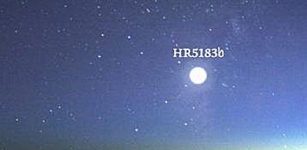 New Study Of HR 5183 System About 103 Light-Years Away In Virgo Constellation
No Comments | Nov 8, 2019
New Study Of HR 5183 System About 103 Light-Years Away In Virgo Constellation
No Comments | Nov 8, 2019 -
 Universe Is Nearly 14 Billion Years Old – Astronomers Suggest
No Comments | Jan 6, 2021
Universe Is Nearly 14 Billion Years Old – Astronomers Suggest
No Comments | Jan 6, 2021 -
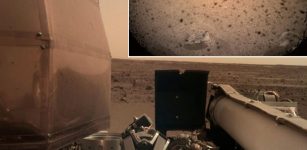 Successful Landing Of NASA’s InSight Spacecraft On Mars
No Comments | Nov 27, 2018
Successful Landing Of NASA’s InSight Spacecraft On Mars
No Comments | Nov 27, 2018 -
 August Explosion: Huge X-Ray Burst Detected In Constellation Sagittarius
No Comments | Nov 12, 2019
August Explosion: Huge X-Ray Burst Detected In Constellation Sagittarius
No Comments | Nov 12, 2019 -
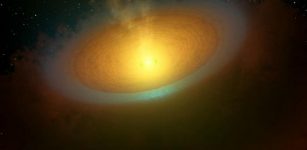 TW Hydrae – A Star With Vast Quantities Of Water In Its Disk
No Comments | Mar 1, 2012
TW Hydrae – A Star With Vast Quantities Of Water In Its Disk
No Comments | Mar 1, 2012 -
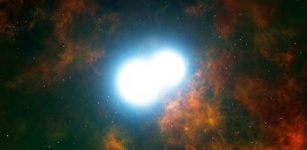 Unique Type Ia Supernova With Hydrogen Emissions – Detected
No Comments | May 13, 2019
Unique Type Ia Supernova With Hydrogen Emissions – Detected
No Comments | May 13, 2019 -
 For The First Time Astronomers Observe New Planet Being Born
No Comments | Nov 19, 2015
For The First Time Astronomers Observe New Planet Being Born
No Comments | Nov 19, 2015 -
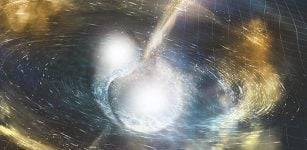 First Neutron Star Merger – Captured
No Comments | Sep 10, 2019
First Neutron Star Merger – Captured
No Comments | Sep 10, 2019 -
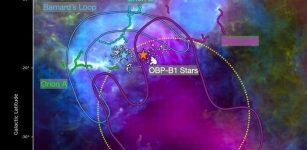 Did Supernovae Help Form Barnard’s Loop?
No Comments | Jun 20, 2022
Did Supernovae Help Form Barnard’s Loop?
No Comments | Jun 20, 2022 -
 Can Cosmic Inflation Be Ruled Out?
No Comments | Nov 9, 2022
Can Cosmic Inflation Be Ruled Out?
No Comments | Nov 9, 2022

